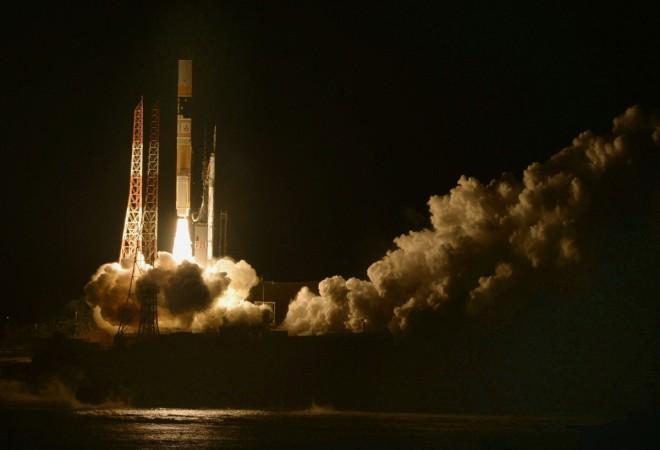
Japan's robotic H-II Transfer Vehicle-6 (HTV-6) is being launched today, December 9, 2016 at 1326 GMT (8:26 a.m. EST) from its Tanegashima Space Center.
Here's all you need to know about the Robotic HTV-6:
- The spacecraft is loaded with water, experiment hardware and spare parts supply for six –person station crew which weigh above 4.5 tons, NASA revealed.
- The unmanned cargo spacecraft is named – Kounotori, which means white stork in Japanese.
- Each HTV resupply spacecraft carries the same name "Kounotori" unlike other resupply spacecrafts.
- The spacecraft will take a flight to the station for a span of 4 days.
- HTV-6 aka Kounotori 6 is the sixth H-II Transfer Vehicle, an unmanned cargo spacecraft which will be replenish the supply at the International Space Station (ISS).
- At present, JAXA aims to send three more HTVs to the ISS, excluding HTV-6.
- Japan plans to launch a total of nine HTV spacecrafts till the year 2020 commences.
- HTV-7 spacecraft is scheduled to launch for 60 days' stay at the ISS in February of 2018.
- In the next mission, HTV-8 will be launched for a 60-day stay in February 2019.
- HTV-9 resupply spacecraft is planned to be launched in February 2020, again for a 60-day stay.
- A plan to device HTV-X has already been approved officially by the Strategic Headquarters for Space Policy of the Cabinet Office in Japan's government.
- In the beginning of 2021, HTV-9 will be substituted by HTV-X.
Check out the live streaming of the vehicle by NASA TV right here at 1300 GMT (8:00 am EST):
NASA TV
You could also check out the launching live on the Japanese Aerospace Exploration Agency (JAXA)'s YouTube channel over here:
YouTube/ Japanese Aerospace Exploration Agency (JAXA)










